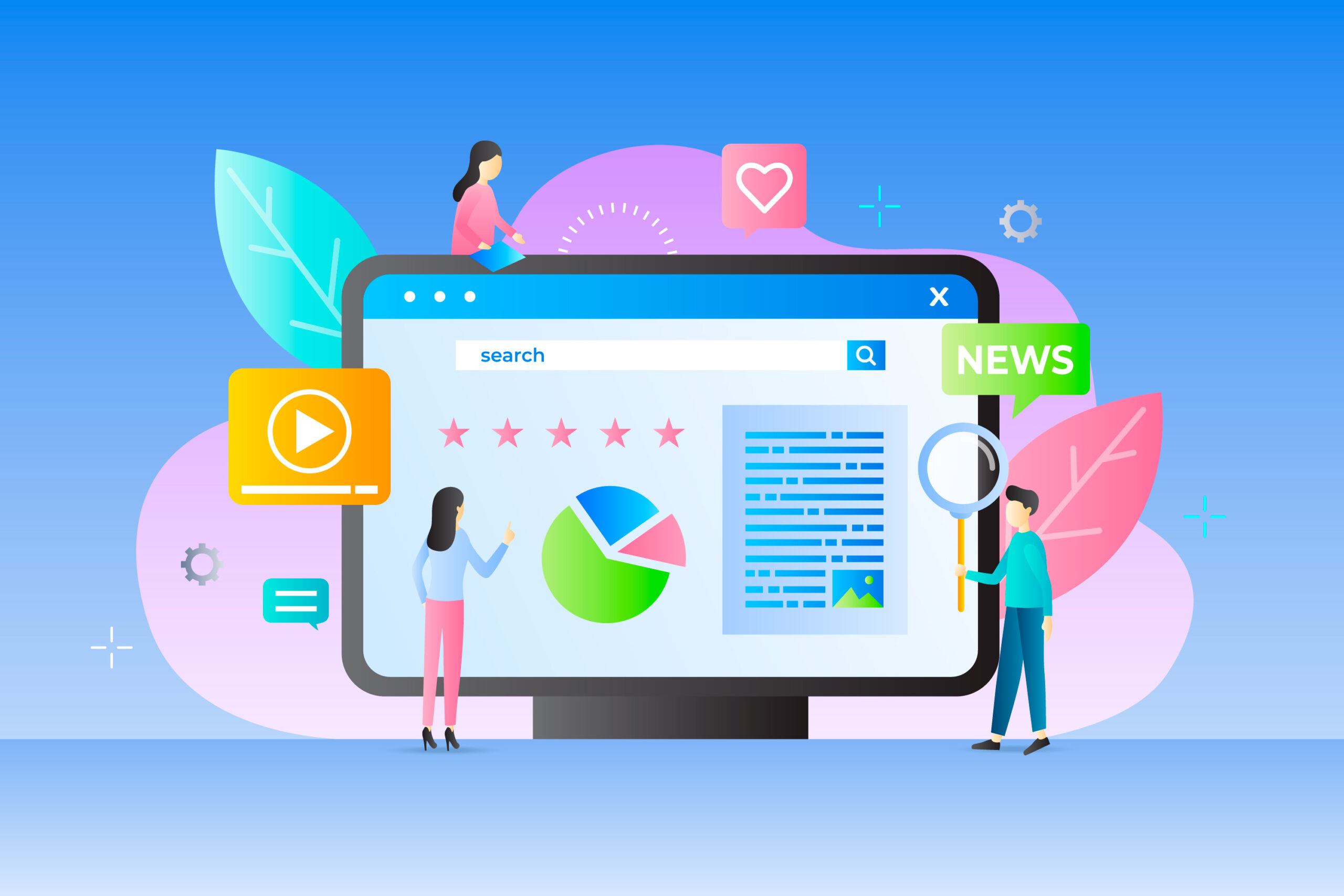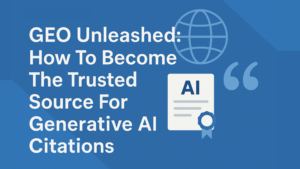Today, businesses are leveraging the online world to reach new customers. However, the competition is fierce, which makes delivering an exceptional user experience an essential component of the marketing strategy.
A positive user experience increases user satisfaction and compels them to the desired action, which is to turn into buying customers.
In this blog post, we will discuss all the key principles and techniques required for optimizing user experience for better customer acquisition.
But first, let’s understand…
The Major Benefits Of Optimizing User Experience For Better Customer Acquisition
There are two major benefits of user experience in customer acquisition.
First, an exceptional user experience positively impacts customer acquisition. For instance, a well-designed and fully functional website that loads faster, is easy to navigate and has captivating content compels users to stay engaged, even persuading them to take the desired action and convert into buying customers.
And the second benefit of delivering a great user experience is helping improve brand perception and reputation. A seamless user experience makes users come back for more and even spreads word of mouth, which also helps acquire new customers. For instance, happy and satisfied customers will be more likely to share their experiences with friends and family, resulting in more opportunities to acquire new customers.
Key Principles And Techniques For Optimizing User Experience For Better Customer Acquisition
1. Make Faster Loading Time
Today, visitors don’t have time to wait endlessly for a website to load. As a matter of fact, nearly 50% of users refuse to wait no more than 2 seconds for a website to load.
These stats show the importance of fast website loading. Users get frustrated and even annoyed when a website takes a lot of time to load. As a consequence, it increases the bounce rate, which negatively affects your SEO and user experience.
To improve the loading speed of your website, first compress all the images into smaller sizes. This is because high-resolution takes a lot of space, resulting in taking a lot of time to load. Sometimes, users may need fiber internet service to load the website faster.
Opt to implement a Content Delivery Network (CDN) to ensure the fast loading speed of your website. CDN is a group of distributed servers that caches your website’s content by bringing it closer geographically to where users actually are. So, when a user loads your website in a specific geographical location, it makes it easier for everyone in that vicinity to load that website quicker.
2. Create Engaging Content
Once your visitors land on your website, they need engaging content that makes them stay on your website for a longer period of time. Offer relevant information based on the key search terms that made them visit your website in the first place.
Also, incorporate interlinking between web pages so your users can easily navigate and browse your entire website. This technique will increase your visitors’ time spent on the page, increasing the likelihood of higher engagement rates. The more engaging and captivating your content, the more likely your visitors will be to convert into buying customers.
To create engaging content, you need to understand the pain points of your target audience. Craft compelling content that resonates with them and empathize with their struggles and provide solutions with your content or product that will solve their problems for good. Using storytelling techniques is a great marketing strategy to invoke users’ emotions and persuade them to take the desired action.

3. Make It Mobile-Responsive
Mobile devices are continuously proliferating, which means your website should be responsive to different screen sizes and orientations. There should be mobile-responsive designs that function well on all devices without a hitch. You need to ensure that your mobile-responsive website ensures easy readability regardless of the screen size. This strategy will improve user experience and allow you to reach your website to a wider audience.
Today, most modern websites and builders have built-in tools that automatically make your website responsive to different devices. Some development companies also offer customer acquisition services where they craft responsive designs and equip you with customer data. It further helps you understand which devices you are getting traffic and engagement from, allowing you to serve them better.
4. Make It Easy-To-Navigate
A flawless is consistent, easy-to-understand and highly intuitive. A user-friendly navigation should allow the users to navigate and browse the entire website seamlessly and find what they are looking for effortlessly. When a user easily navigates your website, they will be more likely to stay engaged and even convert.
Strategically place CTAs, search bars and links to make the user journey smooth and seamless. Use breadcrumbs in your website for the user to easily understand on which web page they are one and find their way back to the desired web page.
5. Improve Search Functionality
A highly functional search bar allows users to find exactly what they are looking for without delay. This way, your users will get down to business right away. Your search bar should work just like a search engine where a user types a keyword or a query to get instant results without the need to go through several web pages.
You need to strategically place the search bar, ideally in the header, making it easier for the users to find it whenever they need it. Also, incorporate auto-complete features that offer suggestions in real-time, making the search experience of the user a whole lot easier.
6. Promote User Interaction
Incorporating interactive elements in your website amplifies engagement and acquisition. Use these elements in your designs, forms and CTAs. This technique not only is dynamic but it will also boost engagement. It also helps the user better understand the website by guiding them on how they are supposed to interact.
So, implementing a knowledge base and walkthroughs is a surefire way to educate your users on how to utilize all the complex features of your website. Providing relevant guidance that will cater to their questions and needs delivers a seamless user journey that could also result in customer acquisition.
7. Incorporate Dynamic Content
Dynamic content is based on users’ data, browsing history, and preferences. This technique delivers a personalized user interface in real-time. It’s mainly common in eCommerce websites where a visitor abandons the cart and returns to the website after receiving a reminder.
Delivering personalized content is another technique where you can use users’ demographic data. For example, you can use your users’ geographic data and provide personalized offers. Moreover, you can utilize users’ buying history and preferences and deliver dynamic content that serves their needs. In this way, dynamic content increases the likelihood of customer acquisition.
8. Use Automated Assistant: Chatbots
About a decade ago, customer support was delivered manually by an actual human being. But all of that has changed forever with the advent of automated chatbots. These automated assistants offer immediate customer support for all basic queries and questions. They are on the way to provide assistance to more complex ones in the years to come.
Chatbots require fiber internet service to harness the power of artificial intelligence to converse with users like humans, making them feel as if they are speaking with a real person. By implementing a few simple lines of code to integrate a chatbot into your website or app to deliver personalized user experiences to acquire new customers. You can use chatbots for FAQs, product recommendations, or any other help that doesn’t need an actual person. It’s a great option to hire developers who also offer customer acquisition services to help you achieve the desired results.
9. Make a Transparent Privacy Policy
As there is increase in websites there is also significant increase in concern of users’ about their personal data. At such times, having transparent privacy policies plays a key role in building trust and confidence in the minds of your users. This technique will certainly increase customer engagement since they will know that their personal information is safe and protected.
Place your privacy policy in plain sight and it should be in simple language without any use of jargon. The policy should clearly state their data collection, usage, and sharing. Furthermore, privacy should also give and inform about their rights to access, modify, or delete their data.
10. Add Social Proof
Social proof builds more trust and confidence than traditional marketing techniques. By adding customer testimonials, reviews, user-generated content and feedback works wonders for instilling credibility in the minds of your users. It further compels them to take the desired action and convert into buying customers.
Again, you need to strategically place social proof, embedding at key digital touchpoints to boost conversions. For instance, you can add customer testimonials or reviews from popular sites such as Clutch and Trustpilot on your product pages as it will help them make the buying decisions easier.
Conclusion
User experience is an X factor in customer acquisition. A positive user experience satisfied the needs of the users, making them return frequently and spread the word. All of these contribute to increasing the likelihood of acquiring new customers. While, a poor user experience will harm your brand’s reputation and your bottom line.
Use all of the above-mentioned principles and techniques such as speeding up the website loading time, creating engaging content, ensuring easy navigation, and implementing better search functionality for optimizing user experience for better customer acquisition.

Disclaimer: The views and opinions expressed in this article are those of the author and do not necessarily reflect the official policy or position of Digitalz Pro Media & Technologies.
Author: Jason Taylor, associated with Hatch Techs a B2B Digital Marketing Company, is a tech enthusiast with a sharp eye for how the digital world is evolving. He brings a special combination of technological curiosity and journalistic rigor. After earning a journalism degree, Jason Tyler has been writing captivating blogs that analyze complicated technological advancements and trends for more than five years. He has established himself as a reliable source for readers trying to make sense of the rapidly evolving world of technology, thanks to his gift for demystifying the complexities of the IT sector.





